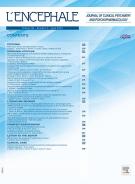L’injonction de soins. À propos d’une étude réalisée sur les régions Alsace et Lorraine - 20/02/14
| pages | 6 |
| Iconographies | 0 |
| Vidéos | 0 |
| Autres | 0 |
Résumé |
La loi du 17 juin 1998 a créé le suivi sociojudiciaire. L’une des mesures accompagnant ce suivi est l’injonction de soins. Dans l’esprit législatif, le suivi médical est prévu dans une optique de diminution du risque de récidive. Les principaux individus initialement concernés par cette mesure sont les auteurs de violence sexuelle. Toutefois, de nouvelles dispositions législatives ont étendu ses indications à de nombreuses autres infractions. Comme le soulignait un rapport de l’Inspection générale des affaires sociales, très peu d’études sont disponibles quant à la mise en application de l’injonction de soins. Nous avons réalisé une étude sur la mise en application de cette injonction de soins dans les régions Alsace et Lorraine. Nous dressons ainsi le profil des patients suivis : infractions commises, comorbidités psychiatriques, type de soins proposés. Il s’agit de la première étude du genre sur la zone géographique concernée.
Le texte complet de cet article est disponible en PDF.Summary |
Introduction |
The act of June 17, 1998 created a new form of compulsory treatment: the injunction to care. This is a legal measure intended to fight against recidivism of offenders and sex offenders through medical measures. The only therapies that have demonstrated partial efficacy are cognitive behavioural therapy and treatment with anti-hormone. In France, psychodynamic therapies are paramount in the treatment of perpetrators of sexual violence, although such treatments have not demonstrated effectiveness in reducing sexual recidivism. Very few studies are available regarding the implementation of court-ordered treatment in France. The recent report by the General Inspectorate of Social Affairs (IGAS) in 2011 confirms the absence of medical statistics on the implementation of court-ordered care.
Objective |
We conducted a study on the procedure of the injunction to care in the regions of Alsace and Lorraine. The aim of the study is to develop an inventory coordinator for practitioners (number, type of exercise) and the profile of patients undergoing the injunction of care (type of offense convicted for, psychiatric comorbidity identified for example).
Methods |
We first identified the practicing coordinator doctors by contacting the High Courts in the geographic area studied. We then sent out a questionnaire by post to coordinator doctors to profile their patients on care injunctions.
Results |
We identified 16 practicing coordinator doctors in two study areas: 13 are state hospital doctors and three are private practice. Of the 16 doctors contacted, six returned the completed questionnaires (38% of the sample). This allows characterizing a sample of 50 patients on care injunctions. The majority of convicted crimes are of a sexual nature (92% of cases). This is mostly for crimes or sexual offenses involving minors aged under 15 (83% of cases). Psychiatric comorbidity is the most frequently identified paedophile primary (38%) followed by mental retardation (14%), dissocial personality disorder (6%) and a borderline personality, and emotional liability (6%). Other comorbidities are divided between paranoid schizophrenia, chronic alcoholism, or other personality disorder. The follow-up is monitored by a physician in 82% of cases, while it is provided by a psychologist in 18% of cases. The management consists of a simple psychotherapy in 66% of cases. Pharmacological treatment is most often prescribed with antipsychotics (26% of cases), followed by anti-depressants (4%) and the anti-hormone (4%).
Conclusion |
Our study confirms that the majority of patients on care injunctions are sexual offenders involving minors under the age of 15. The most implemented treatment is a simple psychotherapy. The pharmacological option is infrequent and generally involves the use of inappropriate treatment (neuroleptics). Suppressive libido treatment (antidepressants and anti hormone) remains an exception in France.
Le texte complet de cet article est disponible en PDF.Mots clés : Injonction de soins, Auteurs de violence sexuelle, Médecin coordonnateur, Psychothérapie
Keywords : Injunction to care, Sexual offenders, Coordinating doctor, Psychotherapy
Plan
Vol 40 - N° 1
P. 42-47 - février 2014 Retour au numéroBienvenue sur EM-consulte, la référence des professionnels de santé.
L’accès au texte intégral de cet article nécessite un abonnement.
Bienvenue sur EM-consulte, la référence des professionnels de santé.
L’achat d’article à l’unité est indisponible à l’heure actuelle.
Déjà abonné à cette revue ?


